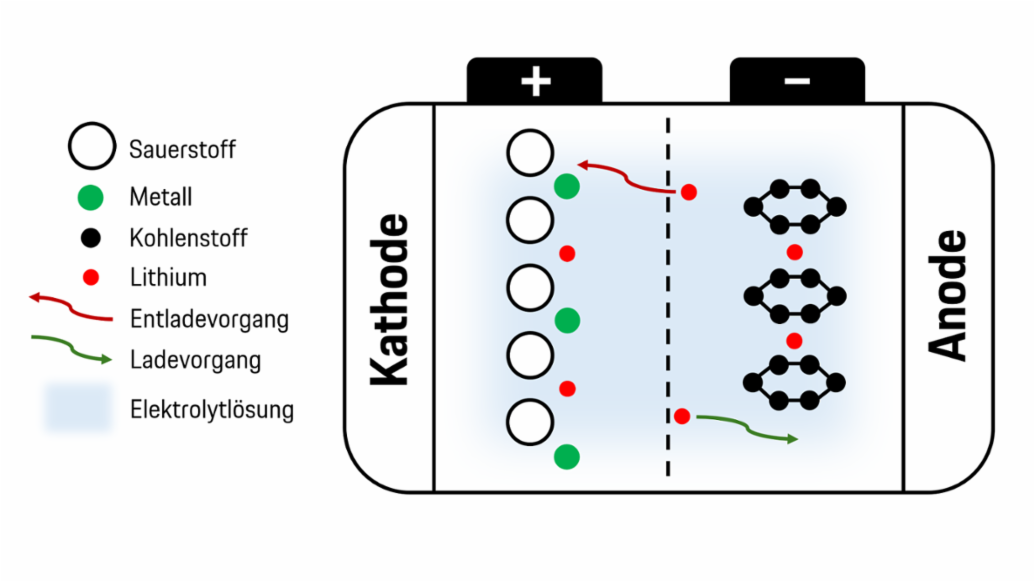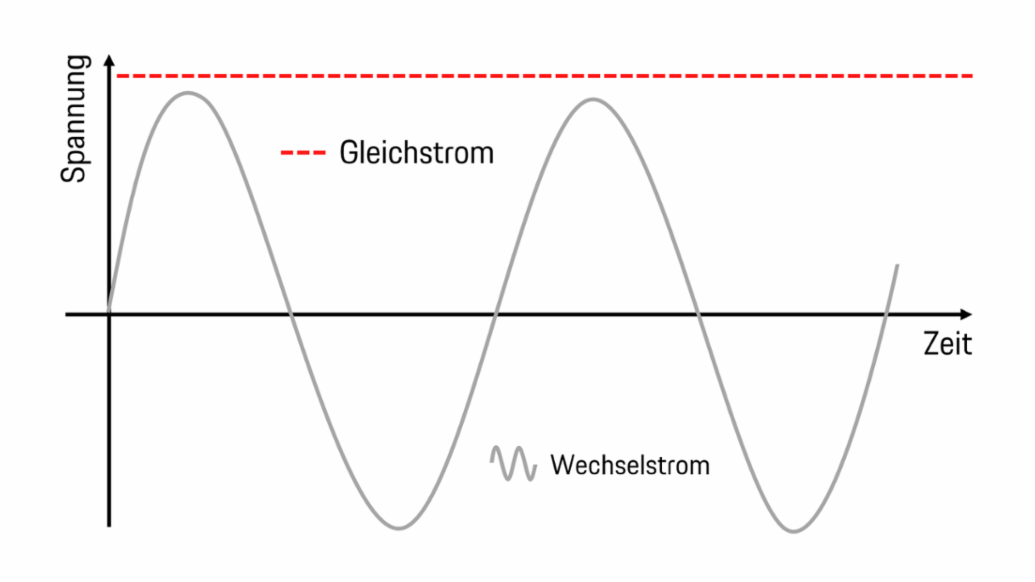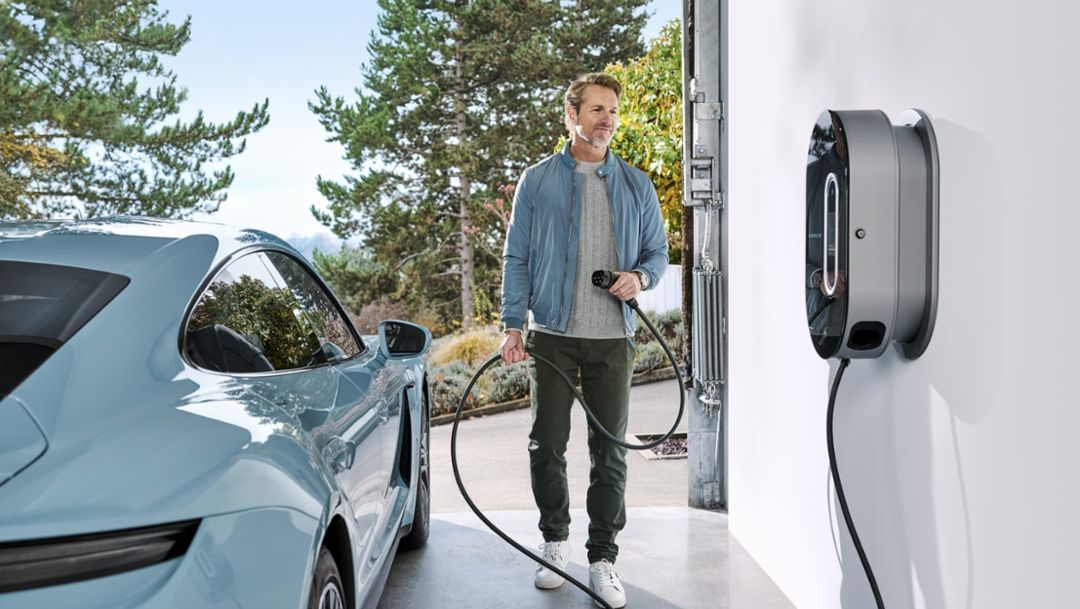AC, DC, HPC: Charging with alternating current and direct current explained

AC charging is charging using alternating current (AC). DC charging is charging using direct current (DC). HPC charging means particularly fast direct current charging (high power charging).
How does a battery actually work?
To understand how AC charging and DC charging differ, it's best to start with the battery. The accumulator can convert chemical energy into electrical energy. Let's imagine a busy marketplace: On one side of the square, the anode, negative electrons are waiting to start moving. On the other side, the cathode, positive ions are waiting. Electrolyte fluid flows between them – the air we breathe, so to speak, that our market visitors need to move around the square.
When we start an electric car, we put a strain on its battery, while a bell rings out on our market square. The electrons leave the anode and flow through the circuit over to the cathode. We assume that an important announcement is taking place at the other end of the marketplace. The crowd moves through the alleys to the speaker. The movement of the electrons generates electrical current, and the electric motor runs.
When charging the battery, on the other hand, the opposite happens. The electrons return from the cathode to the anode. The crowd heads back to the fruit and vegetable stalls on the opposite side of the market. Lithium ions, electrically charged particles of the metal lithium, migrate through the electrolyte from the cathode to the anode to free up the "places" for the returning electrons. In this way, the chemical energy supplied during charging is stored as electrical energy.

Admittedly, our metaphor makes it a bit awkward, but the decisive factor is that the market visitors can only ever move in the same direction – to the speaker or to the sales booths, i.e. to drive the engine or charge the battery. This is because batteries can only store direct current. Alternating current from the domestic socket must therefore always be converted into direct current first if it is to be used for charging. The main difference between AC charging and DC charging.
Why is there direct current and alternating current?
Historically, direct current was in use before alternating current. The first practical applications of electrical energy, such as Thomas Edison's light bulbs, were based on direct current. However, when transmitting direct current over long distances, a lot of energy was lost due to voltage. It was only with the alternating current researched by Nikola Tesla that electricity could be efficiently transported over longer distances. AC power became the standard for general power supply.

How does alternating current (AC) charging work?
AC charging uses electricity directly from the grid, i.e. alternating current. A so-called onboard charger, a charger installed in the vehicle, converts it into direct current – as we have just learned, necessary for storage in the battery. The charging speed varies depending on the power of the charger and the power source, usually between 2.3 and 22 kilowatts (kW) for home charging solutions.

Home and fast charging
More about the common power connections, plug connections and charging capacities
How does direct current charging (DC charging) work?
With much more powerful and thus faster DC charging, the power conversion takes place outside the vehicle, namely in the charging station. Powerful rectifiers, transformers and cooling systems make the fast chargers large devices. This saves space and weight in the vehicle. In addition, there are significantly fewer energy losses between the plug and the battery: Since the current already arrives at the vehicle as direct current, it no longer has to take the "detour" via the onboard charger.
Many modern HPC chargers enable charging capacities of up to 350 kW. With Porsche's particularly suitable 800-volt system, up to 320 kW is possible in the Taycan – it doesn't get any faster at the moment.

400 Volt vs. 800 Volt
More about the advantages of 800 volt system voltage as at Porsche
What is the best way to charge?
The best way to charge an electric car depends on personal mobility behaviour. For those who often only drive short distances and have enough time, the cheaper and gentler AC charging is recommended - the most convenient way is of course via a suitable power connection at the home.
On the other hand, if you go on a trip or cover longer distances in one go, fast chargers with direct current shorten charging times.